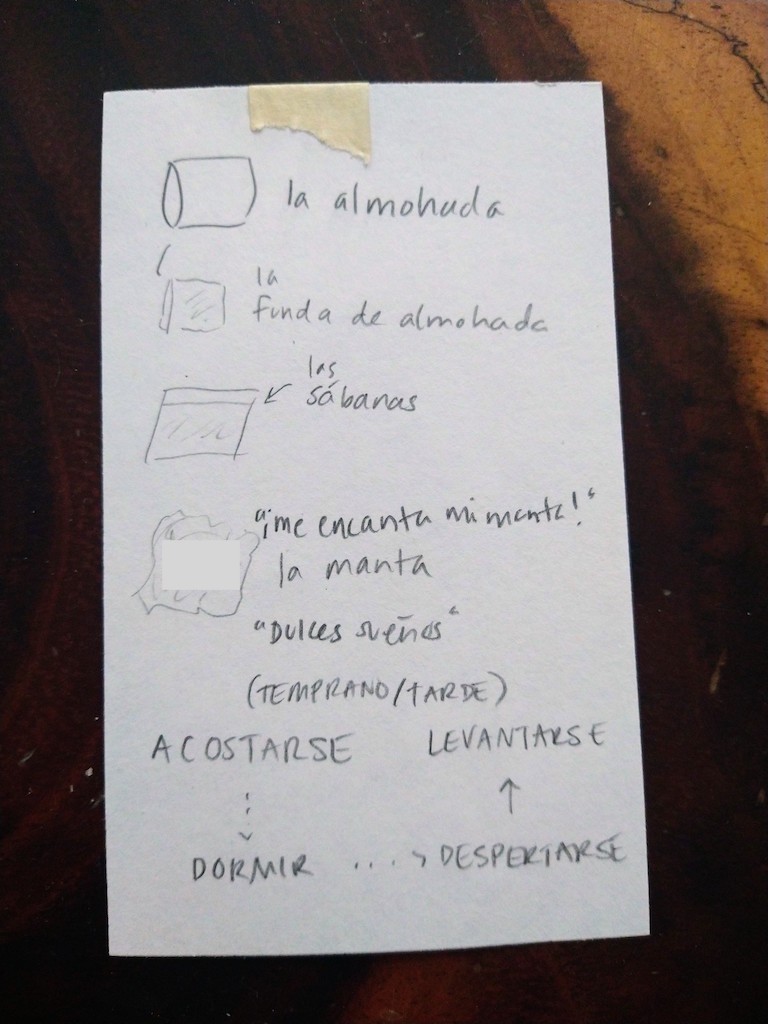I’ve always been fascinated by languages, but traditional classroom learning never quite clicked for me. After unsuccessful attempts with French and Italian, I decided to try a different approach with Spanish: immersion. This past year, I dedicated myself to learning Spanish, and I’m excited to share my journey, progress, and the valuable lessons I learned along the way. Let’s dive in!
My Goal: Conversational Fluency
My goal wasn’t just to memorize vocabulary and grammar rules. I wanted to achieve conversational fluency, the ability to comfortably hold conversations, understand native speakers, and navigate daily life in Spanish-speaking environments. This aligns with the B1 level of fluency on the Common European Framework of Reference for Languages (CEFR), requiring approximately 450 hours of study. My plan? Immersion.
The Immersion Method: My Monthly Tasks and Progress
Months 1-3: Building a Foundation
Hours: 15/month
Tasks: Daily Duolingo lessons for basic vocabulary and grammar.
Progress: Minimal comprehension of spoken Spanish. Movies and shows sounded like gibberish.
Month 4: Diving Headfirst into Immersion in Mexico
Hours: 128
Tasks: Living in Mérida, Mexico (a non-touristy city); 4 hours/day of intensive Spanish classes, 5 days a week; watching 16 hours of movies without subtitles; creating a Spanish vocabulary spreadsheet; weekly calls with an Argentinian friend in Spanish; texting with my Airbnb host exclusively in Spanish.
Progress: Rapid progress due to constant exposure to the language. Started understanding basic conversations and picking up individual words in movies.
Month 5: Solidifying the Basics
Hours: 48
Tasks: Continued immersion in Mexico; vocabulary cards placed around the house; texting and weekly calls with my mom in Spanish; watching Spanish-speaking YouTubers and following Spanish FIRE (Financial Independence, Retire Early) accounts.
Progress: Significant improvement in comprehension and speaking abilities. Started understanding the gist of movies and even laughing at jokes. Experimented with watching different types of content to optimize learning.
Month 6: Independent Learning and Real-World Application
Hours: 28
Tasks: Transitioned to Duolingo Stories for reading and listening comprehension; listened to Spanish podcasts; self-taught three new tenses (Past Imperfect, Simple Future, and Conditional) using a spreadsheet.
Progress: Noticed significant vocabulary improvement. Successfully held conversations with native Spanish speakers from Nicaragua. Understood Spanish airport announcements and started picking up Spanish words in English books and TV shows.
Month 7-12: Continued Progress and Refinement
Hours: Varied, averaging around 30 hours/month.
Tasks: Continued Duolingo Stories, movie watching, spreadsheet maintenance, weekly Spanish conversations, and consuming Spanish media. Added intensive online private classes, changed phone language to Spanish, and lived in Buenos Aires, Argentina for a month.
Progress: Continued improvement in all areas. Successfully navigated daily life in Argentina using Spanish. Adapted to the Argentinian accent through watching local TV and interacting with locals. Finished Duolingo Spanish (despite a frustrating platform update). Read books with Spanish dialogue and understood Portuguese text due to similarities with Spanish. Spanish became seamlessly integrated into daily life.
Key Lessons Learned in My Spanish Language Journey
Embrace Mistakes: They’re Part of the Process
Mistakes are inevitable. Don’t let fear of making errors hold you back. Just speak!
Don’t Translate: Think in Spanish
Avoid translating word-for-word. Train your brain to think directly in Spanish.
Immerse Yourself Fully: Surround Yourself with the Language
Change your phone’s language, listen to Spanish music, and consume as much Spanish media as possible.
Active Learning is Key: Engage with the Material
Don’t just passively consume content. Write down new words, use flashcards, and practice speaking regularly.
Find a Learning Method That Works for You
Experiment with different resources and techniques to discover what helps you learn most effectively. For me, that was a combination of immersion, self-study, and online classes. I also learned the importance of visual learning aids like color-coded spreadsheets and hand-drawn vocabulary cards.
Be Patient and Persistent: It Takes Time and Effort
Learning a language is a marathon, not a sprint. Celebrate small victories and don’t get discouraged by plateaus.
This year of intensive Spanish study has been transformative. I not only achieved my goal of conversational fluency but also gained a deeper appreciation for the process of language acquisition. I’m excited to continue my Spanish language journey and see where it takes me next.
